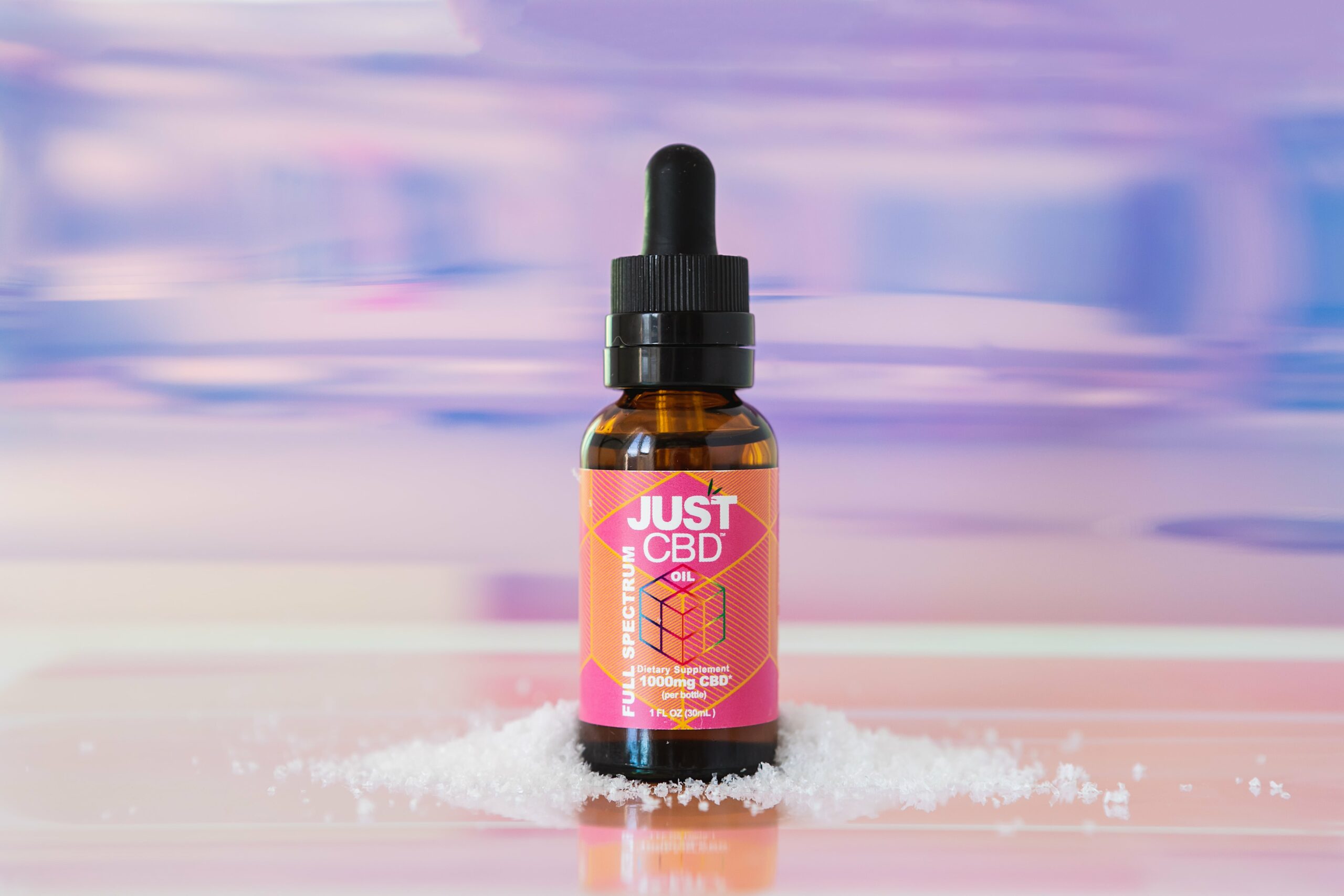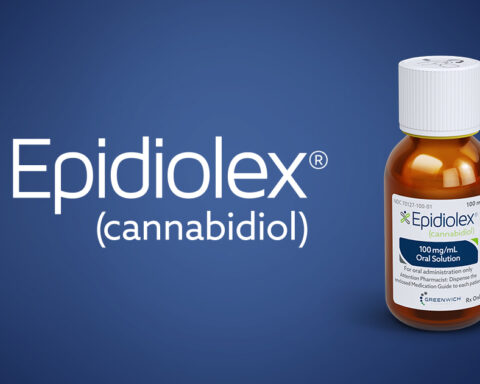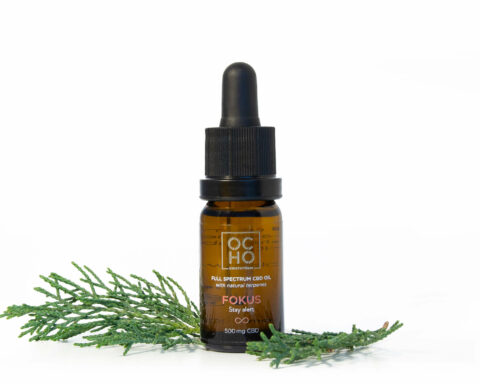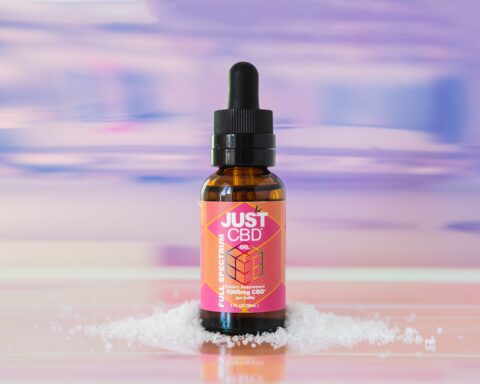CBD products are obtained from the organic hemp plant, whose cultivation was legalized in 2018 in the USA. After finding out the various wellness benefits such as improving sleep, reducing anxiety, stress, and depression. CBD products are offered in various formulations, including capsules, vapes, tinctures, topicals, gummies, and edibles. Besides, they are manufactured in different types and concentrations. There are three types of CBD; broad-spectrum, full-spectrum and isolate. The three are differentiated using the elements available in the products. The elements available in the hemp plant include cannabidiol (CBD), tetrahydrocannabinol (THC), terpenes, and flavonoids. They are blended with other organic elements during manufacturing to improve quality and effectiveness, such as MCT oil (coconut oil). Here is the difference between broad-spectrum and full-spectrum CBD oil.
Full Spectrum CBD Oil
Full-spectrum CBD is also called whole CBD. It contains all the useful elements of the hemp plant, making it more effective. Its elements include CBD, THC, flavonoids, and terpenes. Each of these elements plays a significant role;
CBD
Cannabidiol (CBD) is the most dominant chemical element in the cannabis plant. It has been associated with various wellness, unlike THC. Maroon & Bost (2018) showed that CBD might help in reducing pain, anxiety, and stress by influencing endocannabinoid receptors in the body (B1 and B2), found in peripheral and central nervous systems. Rosenberg et al. (2017) stated that CBD also improves the state of mind through its interaction with serotonin receptors. Serotonin is a neurotransmitter responsible for regulating mood. Most people who have been found to have stress, depression, or anxiety have been associated with low serotonin levels, which CBD oil is believed to improve. Although CBD has been associated with side effects such as diarrhea and severe headache, they only occur when taken in excess.
THC
Tetrahydrocannabinol (THC) is the second dominant element in cannabis after CBD. Unlike CBD, it has intoxicating effects. Although cannabis-based products were legalized in the USA, the Food and Drugs Administration (FDA) regulates THC levels at 0.3% due to its “high” effect. Any products exceeding the levels are regarded as illegal. THC can impair judgment since it changes how the mind processes information. Other side effects of THC include dry mouth, memory loss, red eyes, and anxiety. Therefore, be cautious about THC levels in CBD oil to avoid the side effects.
Terpenes
Terpenes are among the beneficial elements in the cannabis plant. The plant has over 120 terpenes that influence the endocannabinoid body systems. Gallily et al. (2018) stated that terpenes have anti-inflammatory effects, especially when blended with CBD. Unlike CBD and THC, the FDA recognizes terpenes as safe. Terpenes are responsible for the smell and taste found in the hemp plant. Some of the terpenes found in the hemp plant include limonene, myrcene, nerolidol, and linalool.
Flavonoids
Unlike the other elements only found in the hemp plant, flavonoids can be found in vegetables, fruits, and grains. The cannabis plant has about 20 flavonoids. They are believed to have similar functions as terpenes. They offer entourage effects and have anti-inflammatory effects. Some include cannflavine A, cannflavine B, isovitexin, and apigenin.
Broad Spectrum CBD
Broad Spectrum CBD lacks potential side effects of THC. These are products manufactured with all elements found in the cannabis plant except THC. It is made of terpenes, flavonoids, and CBD. Broad-spectrum gives people the opportunity to benefit from all elements of the hemp plant except THC. Although it is void of THC, the claim has not been ascertained. THC is the second dominant element found in the cannabis plant, and extracting it fully might be difficult.
Advantages of Broad-Spectrum CBD
Broad-spectrum CBD oil allows you to benefit from all the elements in the hemp plant, including terpenes, CBD, and flavonoids. It improves its anti-inflammatory effect due to the presence of CBD and terpenes. Also, it helps to avoid the side effects of THC. Therefore, you can avoid getting “high” by using a broad spectrum.
Advantages of Full-Spectrum CBD Oil
Although full-spectrum CBD oil has been associated with THC, they are restricted to 0.3% to prevent side effects. According to de Almeida, & Devi. (2020), some of the potential benefits of CBD oil include antianxiety, anti-inflammatory, and pain relief. When going for either full spectrum or broad-spectrum CBD, consider the following factors;
The Lab Results
The lab results of any products will help you take quality and safe products without contaminants. Confirm using QR codes offered on the labels whether the product has solvents and heavy metals that might threaten your body. Ensure THC levels in full-spectrum CBD oil are within the 0.3% limit to avoid intoxication effects. Confirm that CBD levels are within 10% variance to avoid overdose. Buying from a brand that uses an independent certified lab will minimize the chances of inaccurate tests.
Consider Other Elements
Different manufacturers use various elements to improve the quality of their products. Therefore it is important to consider the most significant elements blended in broad-spectrum or full-spectrum CBD, depending on their functions. MCT oil (coconut oil) is a widely used organic element in CBD products. Its bioavailability properties help improve the absorption rate of CBD products in the bloodstream, offering rapid effectiveness.
Conclusion
Isolate is made of pure CBD, void of THC, flavonoids, and terpenes. Medical experts highly recommend broad-spectrum CBD oil because it helps the user gain the benefits of all elements of the hemp plant, avoiding the intoxicating effects of THC. Also, consider the lab results of any CBD as a safety precaution. Assessing the lab results will help avoid the side effects caused by wrong potency levels or the contaminants in the products. Consider a brand offering QR codes for individual product assessment.
References
De Almeida, D. L., & Devi, L. A. (2020). Diversity of Molecular Targets and Signaling Pathways for CBD. Pharmacology Research & Perspectives, 8(6), E00682.
Gallily, R., Yekhtin, Z., &Hanuš, L. O. (2018). The anti-inflammatory properties of terpenoids from cannabis. Cannabis and cannabinoid research, 3(1), 282-290.
Maroon, J., & Bost, J. (2018). Review of the neurological benefits of phytocannabinoids. Surgical neurology international, 9.
Rosenberg, E. C., Louik, J., Conway, E., Devinsky, O., & Friedman, D. (2017). Quality of life in childhood epilepsy in pediatric patients enrolled in a prospective, open‐label clinical study with cannabidiol. Epilepsia, 58(8), e96-e100.
- Learn to Enjoy Self-care Routine - September 21, 2023
- Jonathan Aufray’s Story - July 29, 2023
- From Public Housing To Ivy League: The Inspiring Journey of Crystaltharrell.com and its Founder - June 7, 2023









